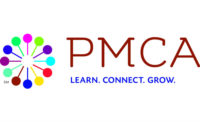
The ZDS College in Solingen, Germany, has been providing training and professional development for all sectors of the confectionery industry since 1951.
Everyone’s focused on chocolate these days, with consumers, food critics and artisanal chocolatiers seemingly tasting, analyzing and making chocolate virtually around the clock. But it takes more than just media buzz to produce quality chocolate efficiently.
To wit, ZDS (Zentralfachschule der Deutschen Süßwarenwirtschaft, the Central College of the German Confectionery Industry) in Solingen, Germany, addresses the ever-growing demand for technical as well as trend information through its biennial seminar specifically designed to meet those needs.
Chocolate Technology 2008, which will be held December 9-11 in Koelmesse’s Congress-Centrum Nord in Cologne, Germany, will provide professionals critical to the procuring, processing, manufacturing, marketing and selling of cacao and chocolate access to not only the latest developments in new product introductions and market trends, but also to exciting advances in ingredient and processing technology.
Conceived with technologists and scientists in mind, the program actually benefits a broad range of professionals in the industry, ranging from production and quality managers to product developers and analysts. There are topics that will interest both long-serving members of the industry as well as newcomers.
Thus, during the course of three days, industry and academic experts will zero in on topics such as chocolate flavor development in conching, advances in roll refining and bloom prevention techniques as well as very specific and detailed work on cocoa flavor, flavanoid analysis and the use of PCR to determine cocoa shell content.
There are parallel sessions that provide attendees the choice of listening to presentations that review fats and emulsifiers, discuss analytical techniques and evaluate health and milk ingredients.
In addition, an exhibition by ingredient and equipment suppliers compliments the main lectures. Some of the exhibitors will be making short presentations about their new products and ideas during program breaks.
The Chocolate Technology 2008 symposium also enables attendees to network with experts within the chocolate industry.
Plenty of time has been built into the program to allow these impromptu meetings.
To kickstart the networking process, an opening banquet involving all participants will take place on the first evening of the congress.
For more detailed information visitwww.zds-solingen.de.

This year's Chocolate Technology 2008 symposium, organized by the ZDS, will take place December 9-11 in Koelmesse's Congress-Centrum Nord in Cologne.
Chocolate Mass Production Benefits from Extra Dry Ingredients
[Editor’s note: The following abstract provides an example of the kinds of technical and trend information that will be presented at the Chocolate Technology 2008 symposium in Cologne. It is presented by Prof. Dr. Siegfried Bolenz, Hochschule Neubrandenburg - University of Applied Sciences, Lebensmitteltechnologie - Food Technology, Neubrandenburg, Germany and Eberhard Lipp, Lipp Mischtechnik GmbH, Mannheim, Germany.]Chocolate conching is usually still performed in a time-consuming batch process. For milk chocolate, its main purpose is to remove water and to adjust flow properties. As the conch is not an efficient dryer and flow properties are mainly influenced by shear treatment, the objective of this study was to separate and optimize both processes.
Prior to liquefaction, refiner flakes were dried to less than 0.6 % of water in an oven, thereby enabling the operator to omit the dry phase of conching.
Conventional conching of five hours was then reduced to a liquefaction process taking 20 minutes. Alternatively continuous processing was tested applying a high shear mixer REFLECTOR. Sample properties were very close to a standard.
Only continuous liquefaction at very high throughputs resulted in slightly increased viscosity. Sensory analyses just found negligible differences. Thus neither pre-drying nor short or continuous liquefaction had a negative impact on product quality.
The second part of Bolenz’ and Lipp’s presentation focused on using extra dry milk ingredients to accelerate the conching of milk chocolate. Again the objective of this project part was to shorten conventional conching and to replace it by short or continuous liquefaction. Unlike the first attempt, this time the approach involved using very dry raw materials instead of drying refiner flakes.
Focus was given on milk ingredients, as they are the main water contributors in milk chocolate recipes. Less water is brought into the product if milk powder is dried below its equilibrium beforehand. Thus water removal by conching will no longer be necessary, allowing the operator to omit the dry conching phase.
Fat covering of particles and adjustment of flow properties can be achieved by high shear force. Skim milk powder was dried to less than 1 % moisture and then stabilized. Milk chocolate flakes produced thereof contained less than 0.6 % water. Conching time was gradually reduced. Flow properties of samples were very close to a standard. Scale up gave similar results. A batch process now takes 15-30 minutes, depending on energy input.
Using a continuous high shear mixer is also feasible. Minor sensory differences between samples and standards were neither related to milk powder drying nor to liquefaction.
For scale-up of skim milk powder drying, different devices were tested in further trials. Most of them were principally feasible, but in terms of process time, handling and costs some were found advantageous. A process was developed, which resulted in drying costs of 0.01 € per kg milk powder at a capacity of 6 t/h of chocolate mass.
In return operating, investment and capital costs for conching are greatly reduced.
Therefore the overall costs are considerably lower with the new process. Also the space requirement is reduced tremendously.
The third and final part of the presentation will deal with the influence of extra dry or pre-dried raw materials on the technology of particle size reduction. Also in this fields some promising first results were found so far. Research is currently still underway (Jan. 2008), but the results will be available at the Chocolate Technology symposium.

